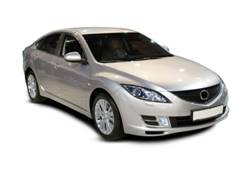 Transportation is a leading source of pollutants, which cause climate change. The major car manufacturers of Ford, General Motors, Toyota, Honda, Nissan, Volkswagen, Volvo and even BMW and Mercedes have all begun to produce greener cars.
Transportation is a leading source of pollutants, which cause climate change. The major car manufacturers of Ford, General Motors, Toyota, Honda, Nissan, Volkswagen, Volvo and even BMW and Mercedes have all begun to produce greener cars.
Saving Money with a Hybrid
Hybrids combine a petrol-powered engine with an electric motor. They also generate energy from the heat arising from brakes. If you peruse the latest car news with motoring.com.au., you’ll find that the Toyota Prius is the most popular hybrid. Hybrids are more expensive that conventional cars, since the drive train which connects engine to wheels is more elaborate while the battery is sizable and of premium quality. Drive trains can be expected to fall in cost as technology improves, however this is likely to take in excess of two decades. The price differential between hybrids and regular cars is known as the hybrid premium.
Is it worth the cost?
A hybrid will cost more initially, but research by the US automotive research company, Vincentric, found that 11 of the 25 models examined evoked less costs than petrol-powered vehicles in the long run due to depreciation, insurance, finance, fuel consumption, taxes, fees, repairs and maintenance: the technology pays for itself.
People have expressed concern about the durability of the batteries of hybrids, but defenders of the faith say that some have driven more than 300,000km without a problem.
Using less petrol, hybrids are most well-suited to people who drive long distances. They emit up to 90 percent less carbon monoxide, hydrocarbons and nitrogen oxide. The quantity of petrol used varies by model, making it worthwhile to review the ratings of the Australian government’s Green Vehicle Guide before buying a vehicle. With the cost of petrol rising, using less is good not only for the environment, but a person’s pocket. Hybrids produce further financial benefits in that parking them is sometimes free.
Buying a Hybrid
The only electric car reviews you’ll ever see for cars available in Australia will be for the Holden Volt. One drawback of electric cars is their range. The petrol gauge of a car will issue a warning when there is a range of less than 100km remaining, but this is almost as much as the full range of some electric cars. Most journeys, however, are short, and rather than the endless outback highways and rugged mountain tracks seen in advertisements, almost all Australians drive in cities. In Sydney, fewer than 10 percent of cars move more than 100km in a day. The median distance travelled is under 35km.
Research conducted on behalf of insurance companies has proved that the drivers of hybrids are less at risk of accidents. Although some insurers give lower premiums for hybrids, perversely, some charge more. It would be best to avoid an insurer that charged more.
Ultimately, it is hoped the purchase of a green car will leave a better world for the next generation. Lower petrol use is also attractive because, per the Australian Competition & Consumer Commission, the country is likely to become increasingly reliant on fuel imports. Buying a green car would also be of benefit to the driver, financially.
Is this the way of the future?
You must log in to post a comment.